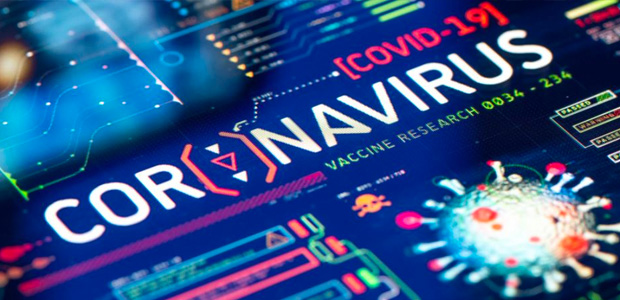
This definitive use case walks through COVID-19 testing billing and coding procedures in 2022 step-by-step, using examples to illustrate how to optimize claims submission and payment across major payers like Medicare, Medicaid and top commercial insurers.
Follow along as we outline exact billing codes, payer coverage specifics, common denial scenarios, patient cost projections, and revenue integrity best practices leveraging the latest COVID-19 testing guidance. This detailed resource serves as a comprehensive reference for frontline billers, revenue cycle leaders, and executives overseeing pandemic response at hospitals and clinics nationwide.
CPT Code Selection for COVID-19 Test Billing
Medical coders must understand the CPT codes designated for COVID-19 testing to optimize billing accuracy and prevent denials.
We will review the 3 main codes linked to COVID-19 tests:
87635: Infectious Disease Pathogen Detection by Nucleic Acid (DNA/RNA); Severe Acute Respiratory Syndrome Coronavirus 2 (SARS-CoV-2) (Coronavirus disease [COVID-19]), Amplified Probe Technique
- Use for FDA-approved nucleic acid/PCR COVID-19 testing
- Highly specific assay with lower potential for false positives
- Samples tested in certified high-complexity labs
- Gold standard diagnostic test for active COVID infection
- Provides qualitative positive/negative results only
87426: Infectious Disease Pathogen Detection by Immunoassay Technique; Severe Acute Respiratory Syndrome Coronavirus 2 (SARS-CoV-2) (Coronavirus disease [COVID-19])
- Designated for rapid FDA-authorized antigen testing
- Provides rapid qualitative positive/negative determination
- Less sensitive with higher false negative potential than PCR tests
- Performed as point-of-care tests in clinics, not sent to labs
- Results in less than 1 hour turnaround time
0224U: Antibody detection; Severe Acute Respiratory Syndrome Coronavirus 2 (SARS-CoV-2) (Coronavirus disease [COVID-19])
- Detects previous COVID exposure through IgG, IgM antibodies
- No utility for diagnosing active or acute COVID infection
- Quantitative lab-based assay reports antibody titers
- Primarily used for population-level surveillance testing
Appending the diagnosis code U07.1 on claims links testing services to COVID-19 specifically. Contact tracers, school screening, travel clearance, and surveillance testing not medically necessary may require additional justification or result in denials depending on payer policies.
Let’s walk through billing examples across major payers illustrating appropriate CPT code usage…
Medicare Billing for COVID-19 Testing
Under Medicare Part B, beneficiaries pay $0 cost share for medically necessary COVID-19 testing during the public health emergency.
This includes:
- Diagnostic testing for symptomatic patients
- Testing related to close contact exposures
- Screening immediately preceding medical procedures
Covered CPT codes include 87635, 87426, and 0224U. Providers cannot separately bill specimen collection using codes like G2023-G2024.
Here is a sample Medicare claim for PCR diagnostic testing:
- Patient presents with runny nose, cough, and subjective fever
- Provider documents symptoms and orders PCR test due to exposure history
- Lab performs PCR test using CDX equipment on nasopharyngeal swab
- Results confirm COVID-19 diagnosis
- Claim filed with:
- CPT Code: 87635
- Diagnosis Code: U07.1
- No member cost share applies
This leverages the highly specific PCR assay to diagnose based on clinical presentation. Contrast with an antibody surveillance claim:
- Asymptomatic patient seen for annual wellness exam
- No known COVID exposures currently
- Provider decides to check previous COVID infection status
- Serum blood sample sent for quantitative antibody analysis
- Results show IgG antibodies indicating past infection
- Claim filed with:
- CPT Code: 0224U
- Diagnosis Code: Z20.822
- No cost share due to public health emergency waiver
The key differences lie in test purpose and CPT codes chosen to reflect each scenario accurately. Audit your internal COVID-19 testing billing procedures against these examples to ensure compliance.
Let’s examine Medicaid billing next.
Medicaid COVID-19 Test Billing Instructions
State Medicaid programs must provide coverage for medically necessary COVID-19 testing without cost sharing during the public health emergency.
However, policies vary across state Medicaid agencies:
State A Coverage
- Cover CPT codes: 87635, 87426, 0224U
- No prior authorization required
- Specimen collection allowed separately using CPT G2023
State B Coverage
- Cover U001/U0002 codes instead of 87635, 87426
- Require pre-authorization after 2 tests per member
- Do not allow separate billing for specimen collection
State C Coverage
- Cover all CPT codes 87635, 87426, 0224U
- Only cover testing ordered by in-network Medicaid providers
- No authorization needed but clinical criteria must be met
Billing staff must verify state-specific Medicaid guidance on covered codes, pre-authorization needs, ordering provider eligibility, and other program policies before submitting COVID testing claims to avoid denials. Having access to real-time Medicaid coverage databases through outsourced billing experts can smooth COVID test claims filing when navigating disparate state-by-state procedures.
Let’s look at commercial payer billing next.
Commercial Payer COVID-19 Testing Billing and Coverage
While Medicare and Medicaid follow federal COVID testing coverage mandates, commercial payers implement their own unique policies:
Aetna
- Covers testing for Aetna members when medically necessary and ordered by licensed physician/practitioner
- Pays for drive-thru and pharmacy testing with clinician order
- Requires in-network lab conduct PCR, antigen, antibody testing
- Uses CPT codes 87635, 87426, 0224U for reimbursement
- Does not require prior authorization
Cigna
- Covers testing according to CDC guidelines based on symptoms, exposures, medical need
- NYC-based members eligible for city sponsored tests direct through labs
- In-network lab testing preferred, may cover out-of-network at reduced rates
- Negative medical necessity reviews possible for surveillance testing claims
- Diagnostic test claims should use U07.1 diagnosis code
Humana
- Follows CDC criteria for testing coverage conditions
- Waives member cost share for COVID diagnostic testing, not surveillance testing
- Reimburses PCR, antigen, and antibody testing using CPT codes on file
- No pre-authorization mandated currently but subject to change
UnitedHealthcare
- Requires medical necessity with diagnosis code U07.1 for coverage
- Prefers in-network labs but may approve out-of-network
- PCR tests must use 87635 CPT code specifically on claims
- Prior authorization not required for diagnostic testing meeting criteria
Confirm insured patient benefits and health plan testing policies at the time of scheduling appointments to avoid surprise claim denials down the road. Having access to real time payer eligibility and coverage check APIs can streamline validation rather than manual phone calls and paperwork.
Now that we’ve covered coding and billing basics by payer type, let’s outline common reasons for COVID test claim denials and how to avoid them.
Preventing COVID-19 Test Claim Denials
Despite expanded coverage, COVID-19 testing claims still face avoidable denials stemming from coding errors, outdated payer policies, clinical documentation gaps, and administrative mistakes.
Watch out for these common denial root causes:
- Wrong CPT Code: Using vague U0001/U0002 instead of payer-required specific codes like 87635 results in quick rejects. Double check billing systems are mapped to accurate COVID test CPTs.
- No Linking Diagnosis Code: Simply indicating a COVID test took place without providing supporting diagnosis code U07.1 leaves insurers unable to validate medical necessity.
- No Ordering Provider Info: Claims missing the clinician who ordered testing don’t meet reimbursement rules. Include NPI/details with all claims submissions.
- Medical Necessity Not Demonstrated: ICD-10 code linkages between testing and documented symptoms/exposure history must align to justify coverage.
- Timely Filing Deadlines Missed: Payers reject claims not received within submission period – often 6 months from date of service for COVID testing claims. Don’t delay billing.
- No Authorization Obtained: Some payers still require upfront authorization before covering COVID testing – especially PCR assays over $100.
- Network Lab Not Used: Many payers mandate use of in-network labs to contain costs and ensure quality standards met. Verify participation.
Review payer explanation of benefits (EOBs) and denial notifications as they arrive to spot trends. Tracing rejections back to their root cause enables billing process corrections. Having access to a denial management analytics tool that aggregates denial reasons across payers helps zero in on problem areas more quickly.
Now we’ll explore the patient side of COVID-19 testing billing by forecasting financial responsibility.
Projecting and Communicating COVID-19 Test Patient Responsibility
The No Surprises Act requires COVID test costs be covered fully by insured patients’ health plans without member cost-sharing during the public health emergency period.
However, some patients still receive bills in error:
- Inferior benefits checks lead to erroneous copays at point-of-care collection
- EOBs mistaken for bills given insurance-covered cost waivers
- Medicare or Medicaid crossover claims applied to secondary commercial coverage
These situations result in unnecessary patient payments for COVID testing. Proactively communicating cost expectations while clarifying potential billing artifacts can prevent confusion:
Patient A
- Uninsured, strapped financially
- Qualifies for state COVID testing program paying lab directly
- Should owe $0 costs but receives bill for test copays
Resolution: Contact lab billing to halt erroneous member bills and update processing logic to suppress copays for COVID tests under state program.
Patient B
- Has BCBS coverage with high deductible plan
- Previously met annual deductible so in-network COVID testing fully covered
- Receives EOB from BCBS showing $150 test cost applied to deductible
Resolution:Notify patient EOB is not a bill requiring payment due to No Surprises Act protections. Confirm deductible properly updated by BCBS.
Keeping patients informed on COVID-19 testing costs and insurance billing protocols fosters trust in this uncertain public health landscape. Automated status messaging and plain language financial updates are key.
Next we’ll address a critical behind-the-scenes need to enable smooth COVID test billing – results integration.
Integrating COVID-19 Results & Documentation for Streamlined Billing
Seamless data exchange between testing facilities, labs, clinical providers, and ordering locations is imperative for steady COVID-19 billing operations.
For example at drive-thru testing:
- Patient checks in and receives PCR test at temporary testing site
- Swab specimen shipped to high-complexity lab for analysis
- Lab records positive result in their information system
- Test result sent back to drive-thru site EMR via discrete HL7 message
- Ordering provider documentation links result to diagnosis
- Complete information available when lab generates claim
This standardized flow minimizes manual hand-offs vulnerable to gaps that disrupt billing and revenue:
- Accurate demographic and insurance data for accurate claims generation
- Discrete test results to inform specific ICD-10 diagnosis coding
- Properly interfaced lab results into ordering provider EMR to support medical necessity justification
- Chain of custody tracking to confirm analysis of correct patient specimen
- Time stamps and dates aligning across associated records
While beyond the control of billers, understanding the ideal end-to-end workflow helps identify breakdowns inhibiting smooth claim generation and payment for COVID tests.
Now we’ll tie everything together into optimal COVID-19 test billing strategies.
Optimizing “Landing the Plane” – the Final Phase of COVID-19 Test Billing
Many providers focus intensely on rolling out COVID-19 testing, but the final critical phase of revenue cycle management can get overlooked. Consistently landing the plane and optimizing billing procedures long after launch protects financial returns on large testing investments.
Ongoing tactics should include:
- Monitoring coding and billing accuracy through audits to identify improvement opportunities
- Tracking denial rates by reason to identify process adjustment needs
- Reconciling testing volumes and reimbursement rates by payer to pinpoint variance
- Evaluating patient payment trends to inform adjustments in upfront cost setting
- Assessing staff productivity and roles to balance workflow volumes
- Surfacing training needs on updated guidance or systems navigation
- Reporting CLIA waiver expirations to avoid certification lapses shutting down reimbursement
- Watching for sunsetting of public health emergency waivers impacting reimbursement policies
While COVID testing billing complexity will eventually subside post-pandemic, instilling best practices now will serve providers well as healthcare billing intricacy continues increasing across services. And optimizing billing workflows clay early dividends over the long-run.
The ever-changing COVID-19 landscape makes adaptability in billing crucial. But following the detailed steps outlined in this use case as an ongoing reference helps ensure your COVID-19 test billing operations yield maximum reimbursement through the remainder of the pandemic and beyond. Reach out to trusted billing experts if additional guidance is required to translate COVID response initiatives into revenue integrity.
